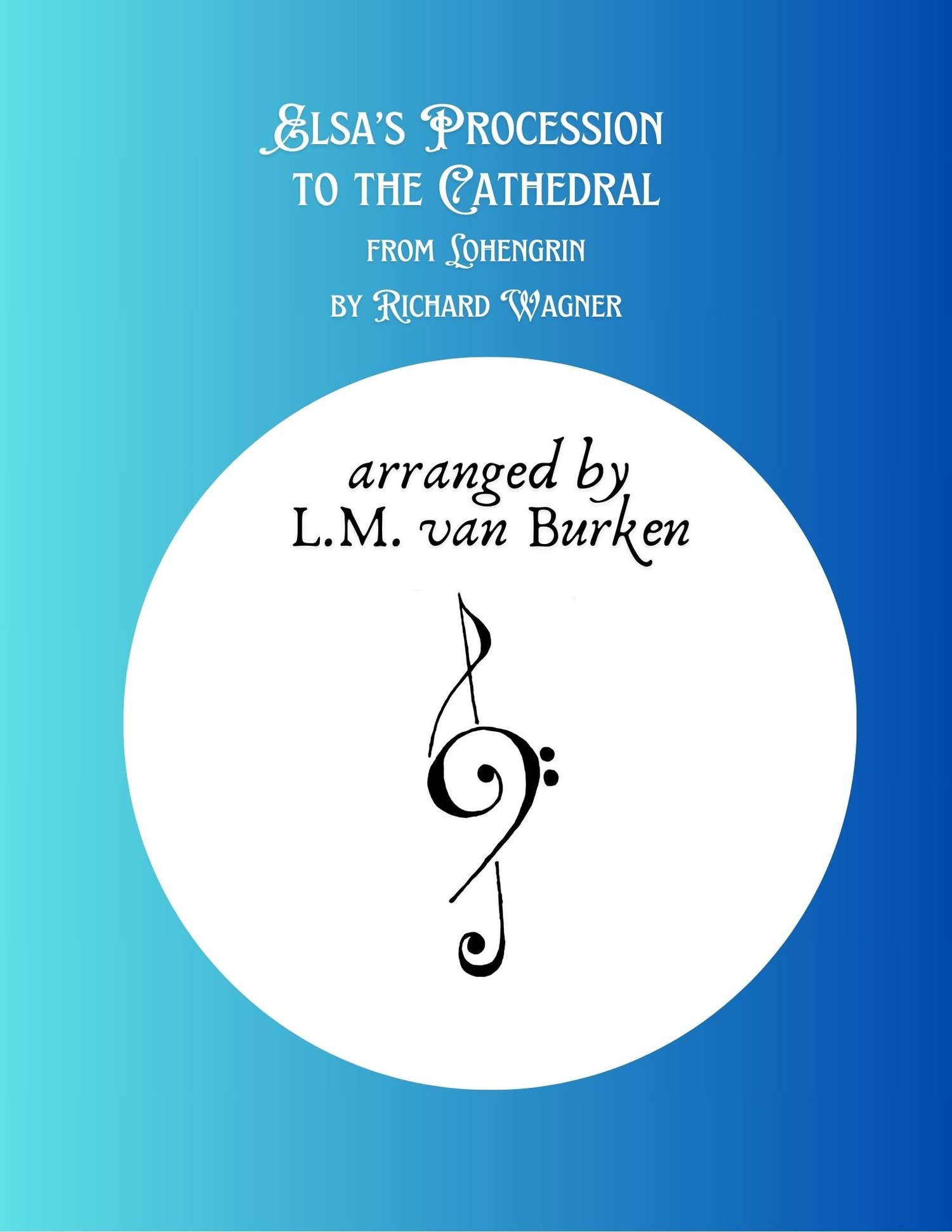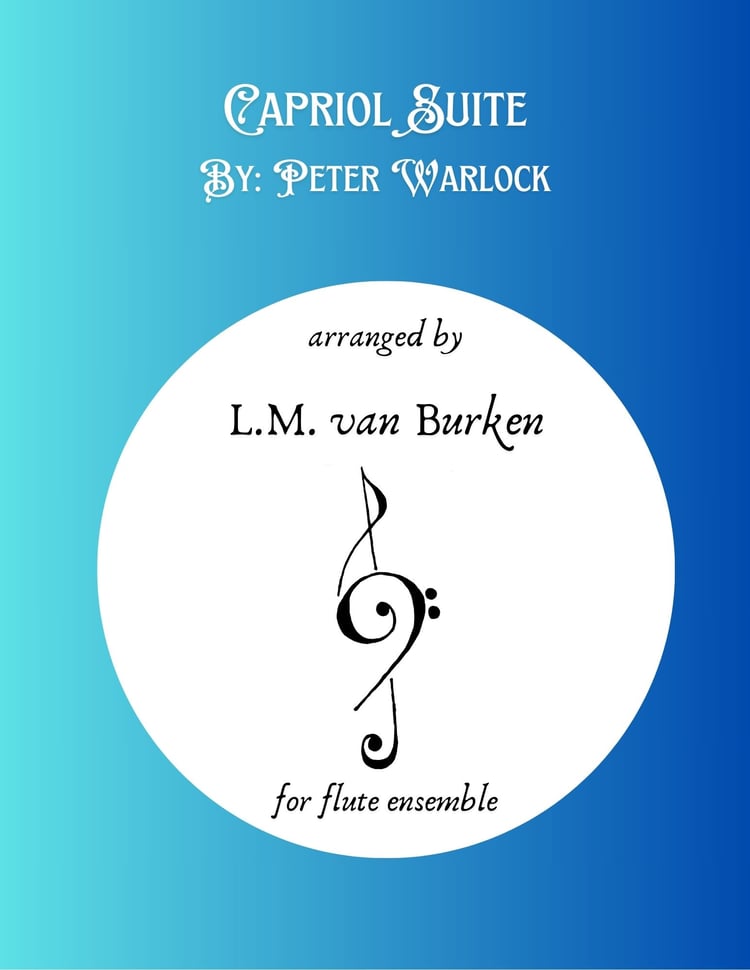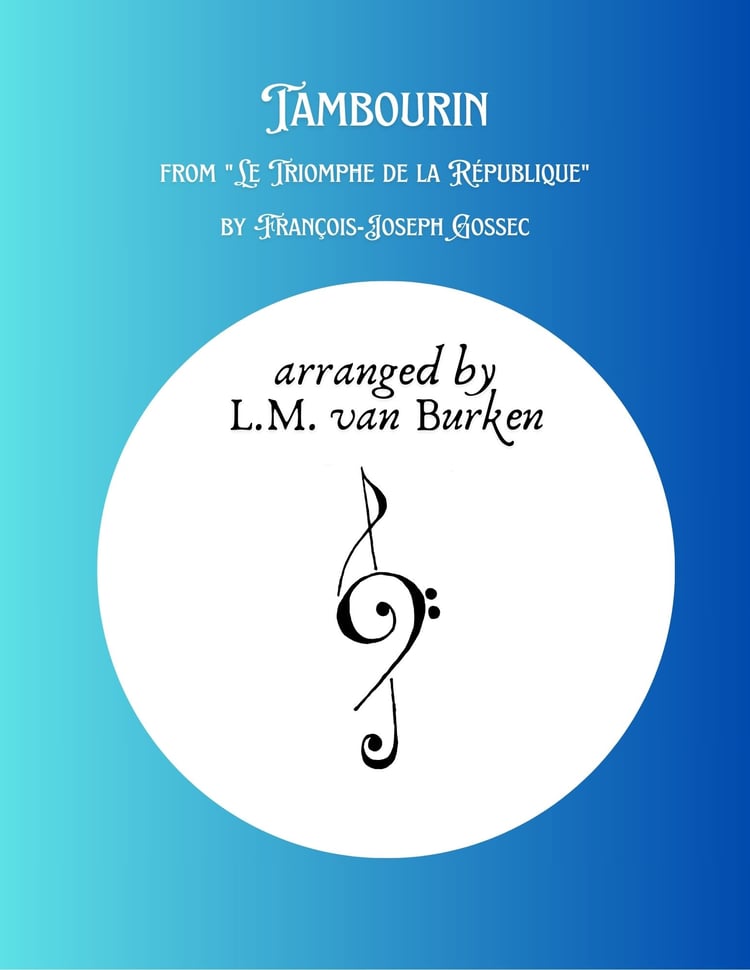
Elsa's Procession to the Cathedral
Elsa’s Procession to the Cathedral is a beautiful and poignant piece from Richard Wagner’s opera, Lohengrin, written in 1848.
Lohengrin tells the story of Elsa, a princess in Brabant (a historical region that includes modern-day Antwerp). She is rescued by a mysterious knight, to whom she is subsequently wedded. The knight hides his identity, but we later find out he is Lohengrin, a knight of the Holy Grail. Elsa’s Procession to the Cathedral occurs at the end of Act II, when Elsa is on her way to wed the mysterious knight, Lohengrin. Her melody slowly builds from a very soft flute solo to a full ensemble at the end of the procession.
The melody and harmonies evoke feelings of yearning, hope, anxiety, grace, and power.
This piece was written with a large flute choir in mind, but it can be adapted to several configurations.
The arrangement includes parts for:
- 4 C Flutes
- 2 Alto Flutes (can be substituted with c flutes - parts included)
- Bass Flute (can be substituted with c flute)
- Contrabass Flute (this part can be omitted)
Watch Tutti Flutti Flute Ensemble perform Elsa's Procession to the Cathedral - Scrolling score video



